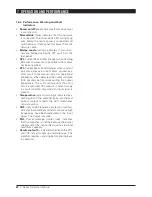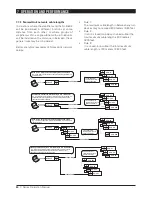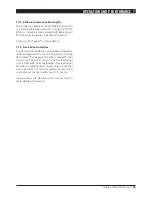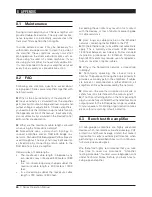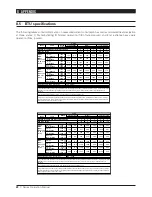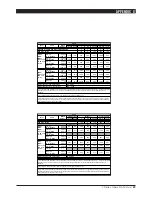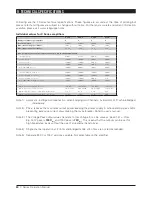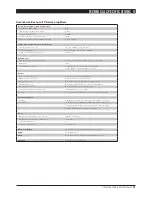
16
C Series Operation Manual
7.4 Audio Input and Output con-
nections, setup and features
7.4.1 Balanced / unbalanced Input connection
Two electronically balanced Phoenix-type inputs are
available. Follow the +,– and Ground labels when
connecting the input signal.
If an unbalanced connection is desired this can be
achieved by summing the minus (“COLD”) and
Ground terminals and using the + terminal as the
“HOT” signal. For the best possible performance,
the summing of ground and minus wires should be
done at the source unit end of the cable (e.g. a CD
player).
Four connectors are supplied for attaching cables to
the inputs. The type of connector used is: Phoenix
Contacts, Part number MSTB 2,5/3-STZ-5,08
When linking the same source signal to
several input channels, be aware that there
is a limit to the number of channels an
output source can “drive”. A typical output
source (e.g. a DSP crossover unit) can drive up to 4
amplifier channels before line-drivers would be
required to buffer the signal.
7.4. Output operation and connection
Screw-terminal connectors with + and – poles are
provided at each channel output for connection of
the speakers.
Make sure that the speaker cables are connected
correctly and tightly, and that accurate polarity is
maintained to all speakers in the system.
As the amplifier outputs produce high voltage,
do not connect or disconnect speaker cables
when the mains power is on. Also, attach the safety
cover on the speaker terminals for safe operation
and to comply with electrical product approvals.
7.4.3 Output bridge mode
It is possible to bridge channels in pairs of two (A+B
and C+D for example). When bridged, the input
source must be connected to input A (A+B) or C
(C+D) respectively. Output speaker cables must be
connected to the plus pole on channel A or C and
the minus pole on B or D.
The main benefit of bridging the output is a doubling
of output voltage. Bridging can be used to turn the
amplifier into a 3 channel amplifier with, for example,
2x1200 W and 1x2400 W at 4 ohms utilizing the C
48:4, or simply to achieve an impressive 200 Vrms
supply per channel.
Most power amplifier designs, when bridged,
automatically introduce a +6 dB input gain boost
which can lead the user to conclude that said
amplifier delivers “more than double the power”
when in bridge mode. This is clearly not the case, as
the gain boost artificially enhances perceived power
at the costof headroom. The C Series amplifiers
work on globally set constant gain, and automatically
compensate the input gain by -6 dB. For example, if
the amplifier is configured in a three channel mode,
then the selected gain is maintained from input to
output on all channels.
7 OPERATION AND PERFORMANCE
Summary of Contents for C 68:4
Page 13: ...C Series Operation Manual 13...





















